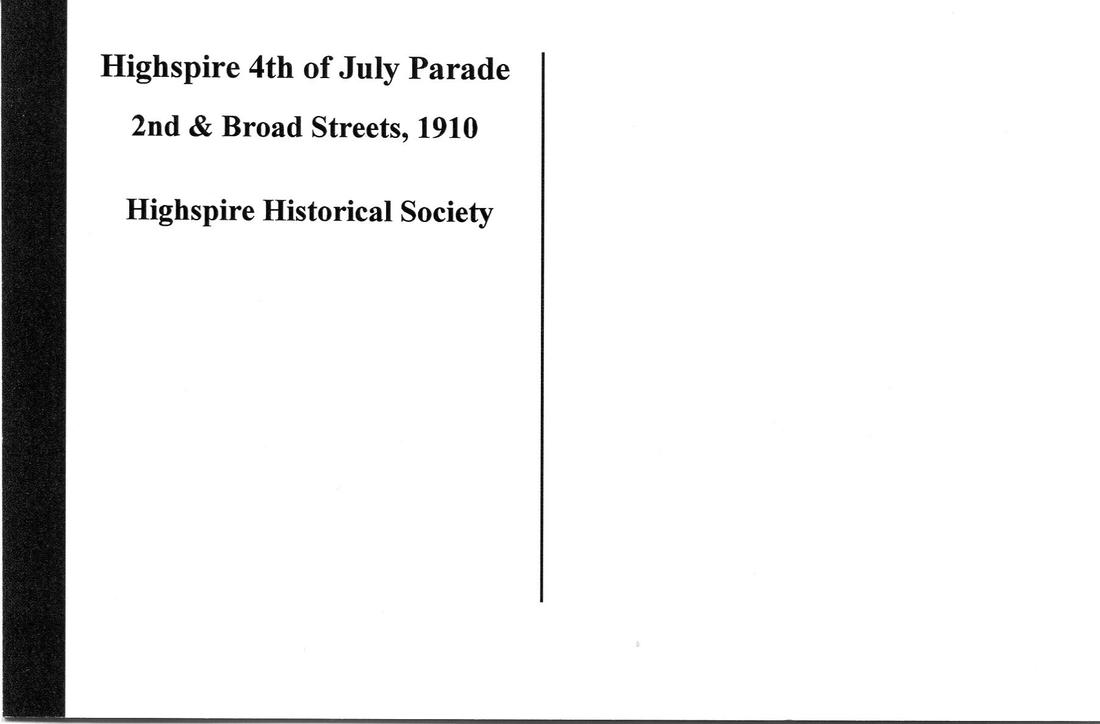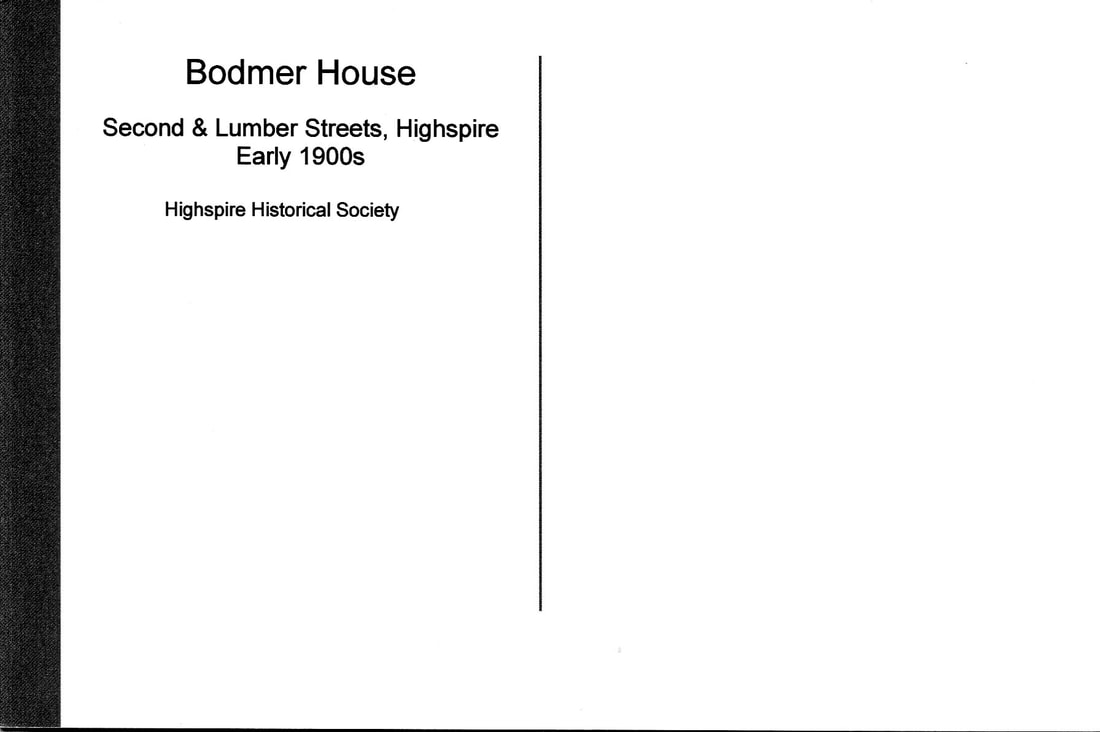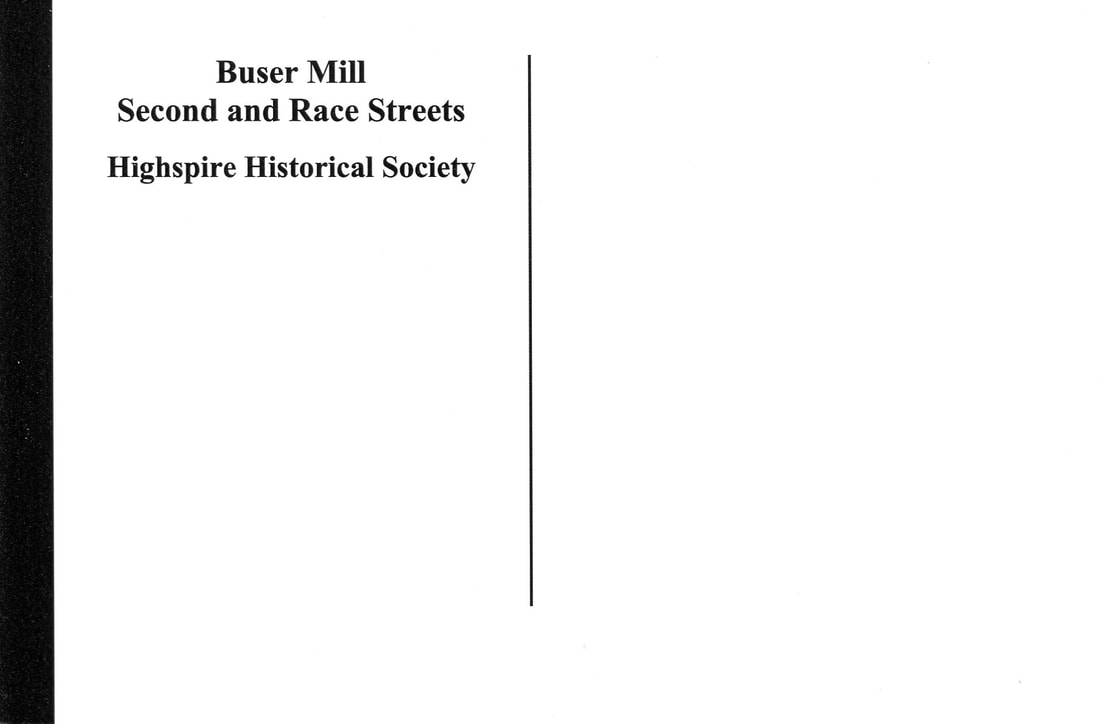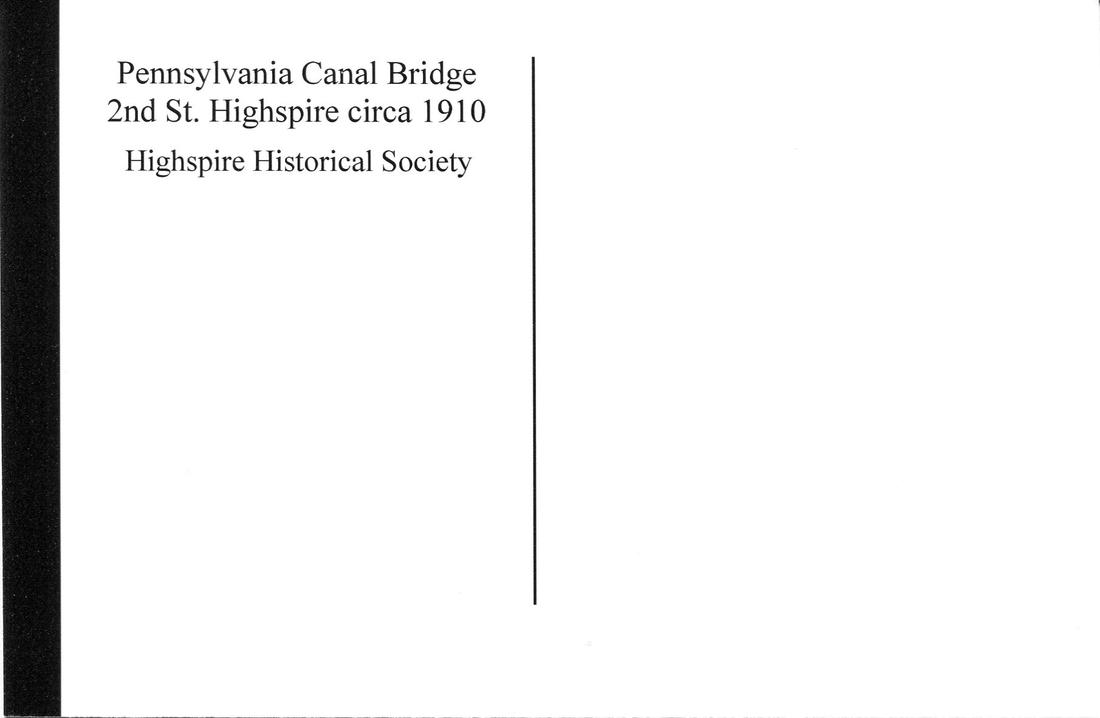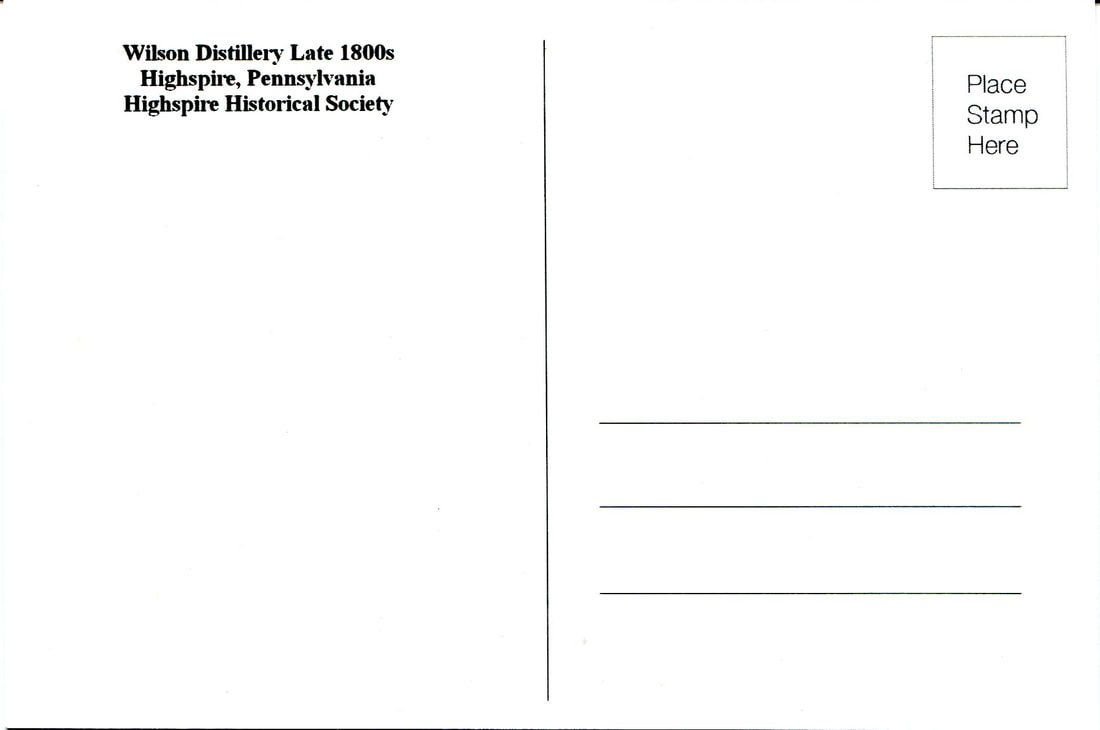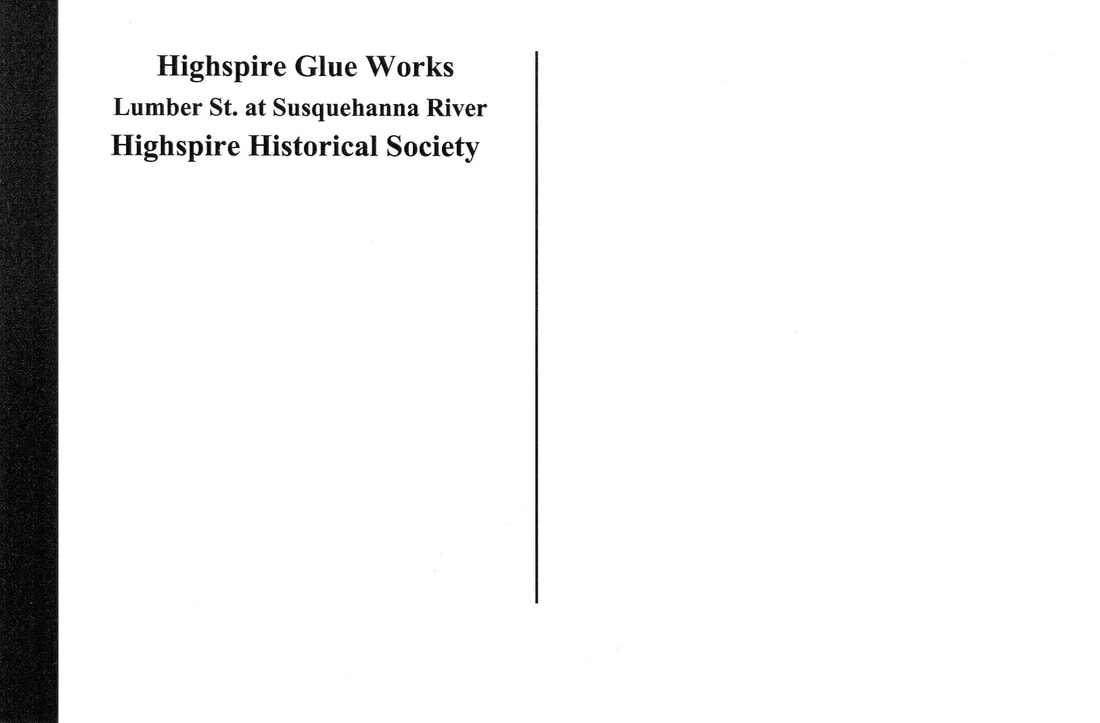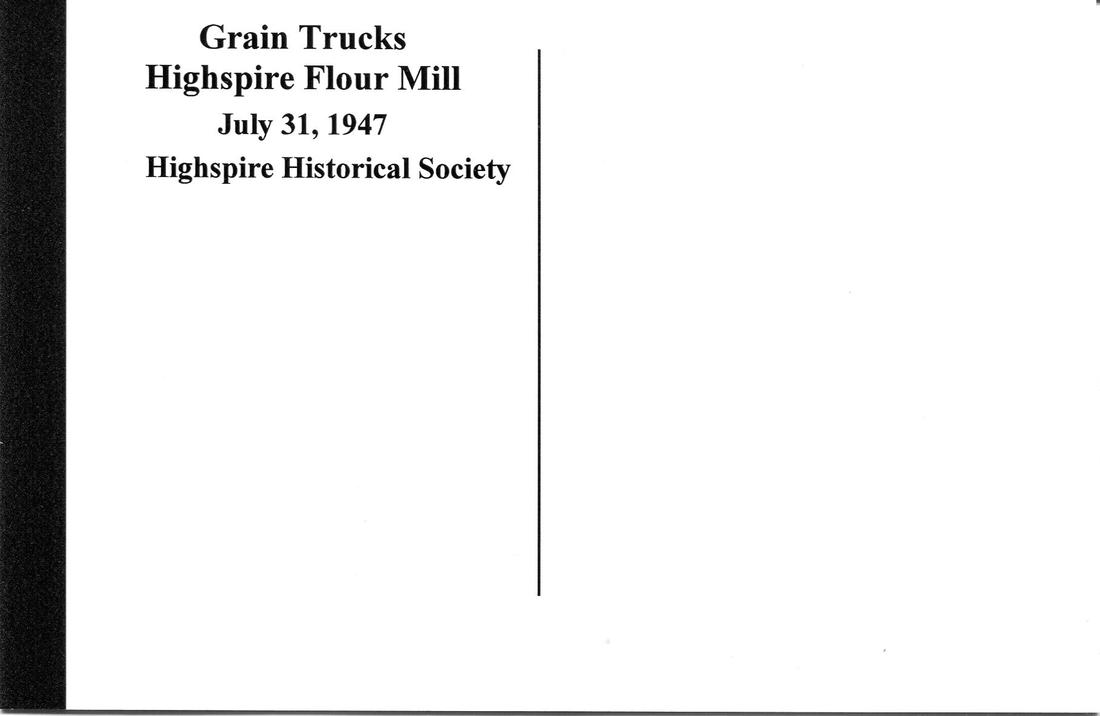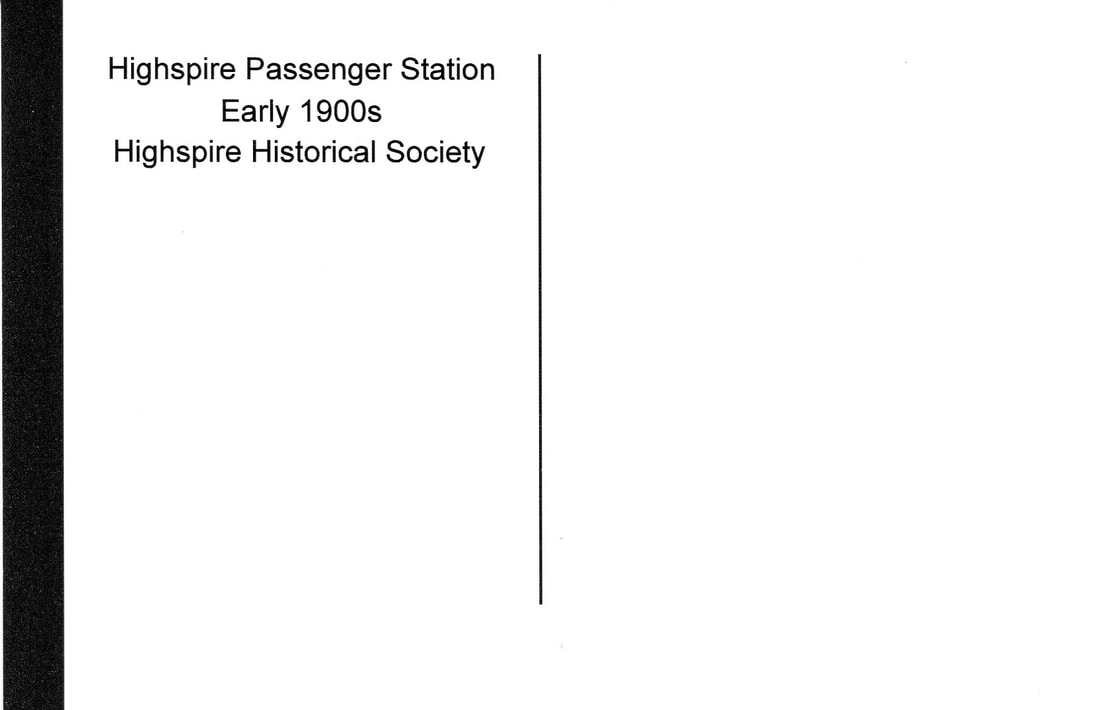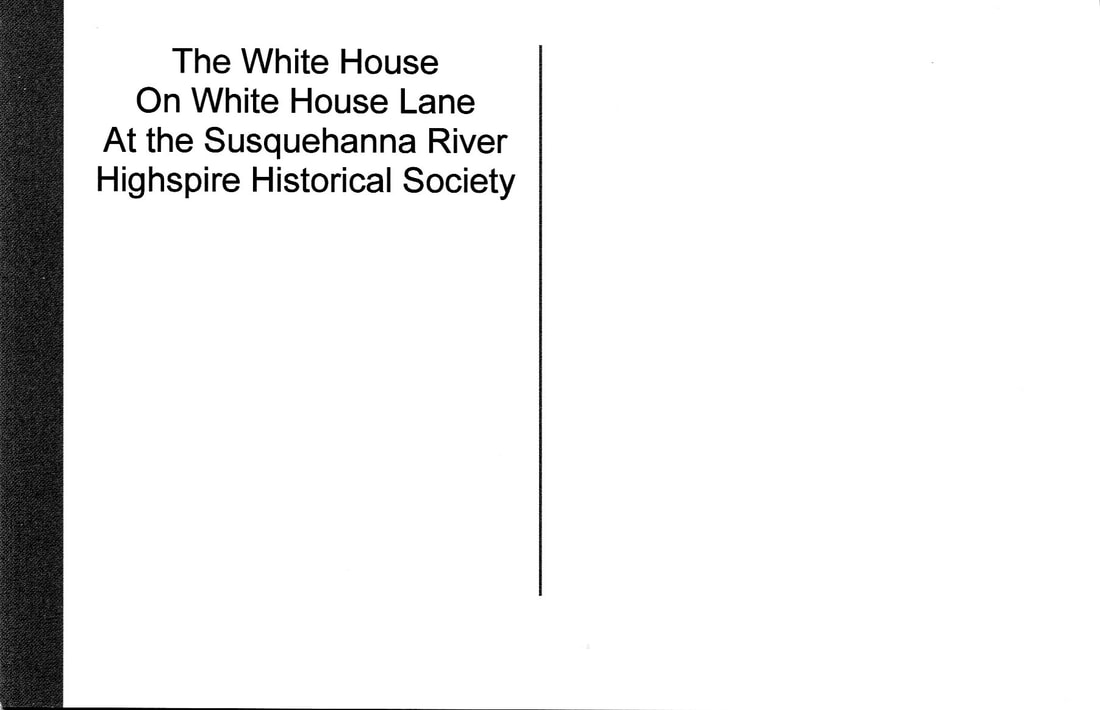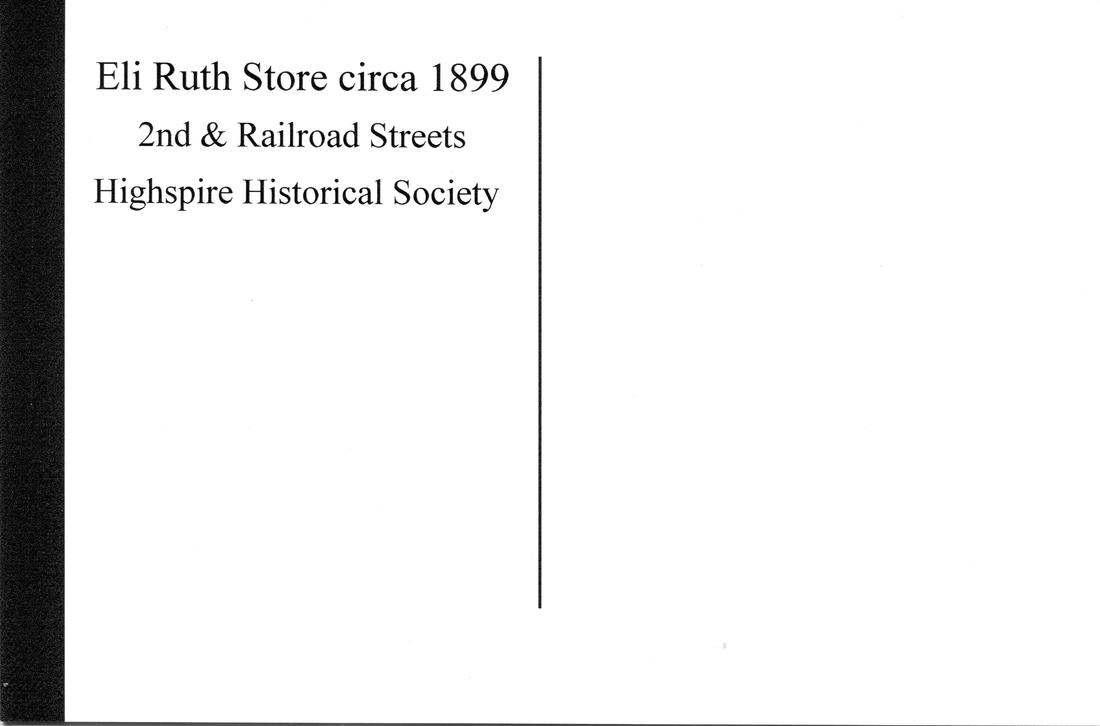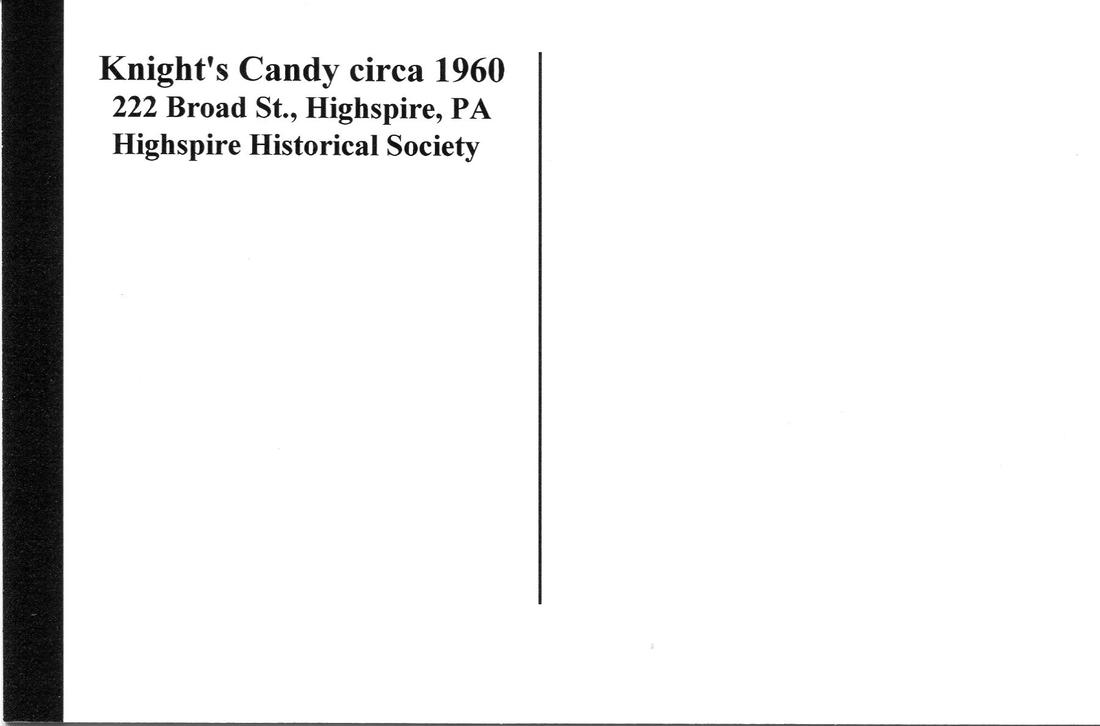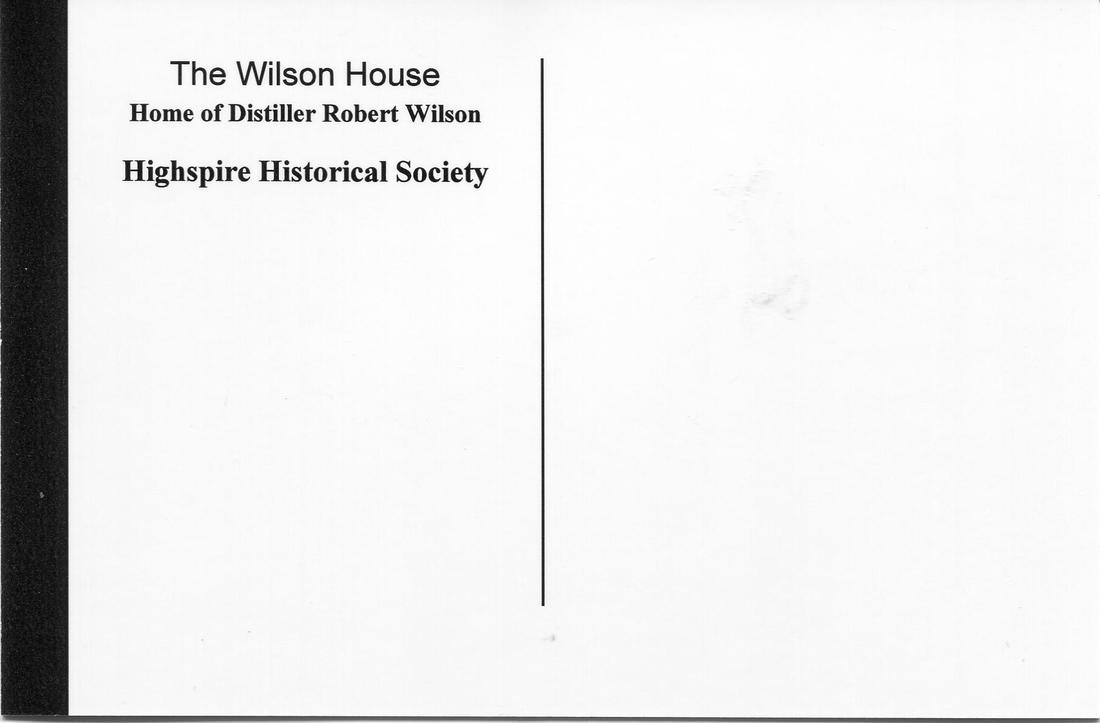POSTCARDS
All postcards except the distillery illustration are 4 in. X 6 in. printed on 130# high gloss paper. The distillery postcard is printed on 100# matt paper. The overprint “Highspire Historical Society” does not appear on the printed postcards. The price at all Highspire Historical Society events is $0.75 each or three for $2.00. The complete set of 16 post cards is $10.00. Postage for mail orders is $0.75 for one to three postcards, $1.00 for three to six, and $3.00 for a complete set. If interested in ordering by mail, send an E-mail to sales@highspirehistory.org with your postcard selection(s) and mailing address. An E-mail reply will provide payment instructions.
Fourth of July Parade 1910
This photo shows the Fourth of July Parade in Highspire, Pennsylvania, 1910. The Pennsylvania Canal Bridge had just been razed and the canal filled in on Second Street. The canal bed is still visible beside Shelley’s Restaurant on the right side of the photo. The shed in the upper left of the photo would soon be razed to straighten Second Street. A frame building on blocks is sitting in front of the brick three story Hocker Building. It had been on the east corner of Roop and Broad Streets and was being moved across Second Street.
Highspire State Bank
The Highspire State Bank was established by local investors in 1920. It was located in the commercial center of Highspire on the north side of Second Street at the intersection with Broad Street. Local architect Frank Fanestock designed the brick and marble building to fit a wedge shaped lot. The bank operated as an independent bank for about 35 years before it was absorbed by the Harrisburg Trust Company in the mid-1950s. Since then the bank has changed hands many times. The original Highspire State Bank building was razed, and a new bank building built in the same location.
Bodmer House
This photo shows the Bodmer House hotel around the turn of the 20th Century. It was located on the southeast corner of Second and Lumber Streets in Highspire. This hotel went by many names over the years. In 1852 it was known a J. Erisman’s Tavern. In 1873 it was Green’s Hotel, and in 1875 it was C. Zecher’s Franklin Hotel. Edward Bodmer acquired the hotel and tavern in the late 19th Century and called it the Bodmer House. The last owner was Donald Beard of Highspire and it went by the name Highspire Hotel in the mid-20th Century. The building was razed by the Dauphin County Redevelopment Authority after the 1972 Hurricane Agnes flood.
Buser Mill
This drawing illustrates the Buser Mill on the southwest corner of Second and Race Streets, Highspire, Pennsylvania. The mill was built by John Hollingsworth in 1775 and was owned by the Buser family in the late 1800s. It was greatly expanded in the early 20th Century by the Highspire Flour Mills. Inc. In 1928 it was acquired by the Wheatena Corporation.
Second Street Canal Bridge
This photo shows the bridge across the Pennsylvania Canal on Second Street, Highspire, Pennsylvania in the early 1900s. There was a bridge in this location from 1830 to 1910. The view is from the northwest on the west corner of Roop Street. The photographer caught the Middletown, Highspire and Steelton Street Railway trolley as it crossed the bridge.
The Wilson Distillery
This drawing illustrates the Wilson Distillery in Highspire, Pennsylvania around the turn of the 20th Century. It was located between Railroad Street on the west, Lumber Street on the east, Lusk Avenue on the north, and Front Street on the south. This view is from the southeast along the Susquehanna River. The distillery was founded by Robert Wilson in 1823 and was noted for its high quality pure rye whiskey. In the early 20th Century under the ownership of the Goldsborough family, it was renamed the Highspire Distillery and the whiskey was renamed Highspire Pure Rye Whiskey.
First Motorized Fire Truck
The Highspire fire truck pictured in this photo was the first motorized fire truck in Dauphin County, Pennsylvania. It was purchased by the Borough of Highspire for Citizens Fire Company No. 1 in 1912. It is pictured in front of the fire station built in 1910 on the southeast corner of Paxton and Broad Streets.
Railroad Freight Station
This photo shows a Pennsylvania Railroad track crew in front of the Highspire Railroad Station around the turn of the 20th Century. It was located on the north side of the railroad tracks between Front and Water Streets just west of Railroad Street. After a flood in 1904 caused by an ice jam briefly closed the railroad between Harrisburg and Philadelphia, the Pennsylvania Railroad decided to elevate the main track on an earthen embankment along the Susquehanna River. That project was completed in late 1904. A new passenger station was then built along new track and the station shown in this photo became a freight station.
Highspire Glue Works
The Highspire Glue Works operated from 1884 to 1904. It was located along the Susquehanna River at the foot of Lumber Street on the east side. In 1904 a flood caused by an ice jam caused the water level to rise rapidly carrying large blocks up ice up the river banks. The building was knocked off its foundation by the ice and the business was never restarted.
Grain Trucks at Flour Mill
Photo of grain trucks delivering grain to the Highspire Flour Mill on July 31, 1947. The trucks are on Race Street on the east side of the mill.
Railroad Passenger Station
This photo shows the new Highspire Passenger Station on the main line of the Pennsylvania Railroad between Philadelphia and Harrisburg. After an ice jam flood closed the tracks in 1904, the railroad decided to elevate the main tracks through Highspire and Steelton on an earthen embankment along the Susquehanna River. This station was built to service the new elevated track through Highspire. It sat at the foot of Railroad Street on the west side of the street. This view is from the track looking northeast. The seven story brick Highspire Distillery warehouse is visible in the background to the left of the photo.
Stoner Store and Residence
This drawing shows the general store and residence of Henry Stoner late 19th Century on the northeast corner of the Pennsylvania Canal Bridge across Second Street, Highspire, Pennsylvania. It did a thriving business when boating on the canal was in its prime. At the turn of the 20th Century the building housed Shelley’s Restaurant. The Pennsylvania Canal Bridge is just to the left in the photo, and the original the two story brick school building on the corner of Roop and Penn Streets built in 1875 with its bell tower can be seen in the distance to the right of the store.
The White House
The White House sat along the Susquehanna River at the foot of White House Lane on the eastern boundary of Highspire. In the 19th Century it was the place where river pilots lodged and where they boarded river rafts to guide them through the rapids on the lower Susquehanna. In the early 20th Century it was a meeting place and tavern. In the mid-20th Century it was a private residence. It was razed in the early 1960s to extend the runway for Olmsted Air Force Base.
Eli Ruth Store
This is a photo of the Eli Ruth Store at the southwest corner of Second and Railroad Streets, Highspire, 1899. Eli is in the bowler hat and his four youngest children are on his left. Mr. Ruth was appointed postmaster in 1913 and converted the store to a post office. It served as a post office until the early 1940s. After the Second World War it became a barber shop and served that purpose until the building was razed in 2008.
Knight’s Candy
Knight's Candy operated at 222 Broad St., Highspire from about 1935 until 1980. Owner Fred Knight manufactured the candy sold in the retail store pictured here. His candy was highly acclaimed, and visitors from other states would frequently stop in Highspire to purchase his candy.
Wilson House
In 1823 Scots-Irish immigrant Robert Wilson (1792-1878) purchased land in the village of Highspire and borrowed $900 to build a distillery. Shortly thereafter he purchased Highspire lot number 50 on Second Street in front of his distillery and built this house where he lived for the remainder of his life. Robert Wilson’s pure rye whiskey was well known for its high quality and Wilson Whiskey grew to be a major international brand by the end of the 19th Century. When the Goldsborough family gained control of the distillery they changed the brand name to Highspire Whiskey.
Twentieth Century Tweet
This postcard is not part of our historical postcard collection, but it is available at the same price. As with our other postcards, it is 4 in. X 6 in. printed on 130 lb. high gloss paper.

